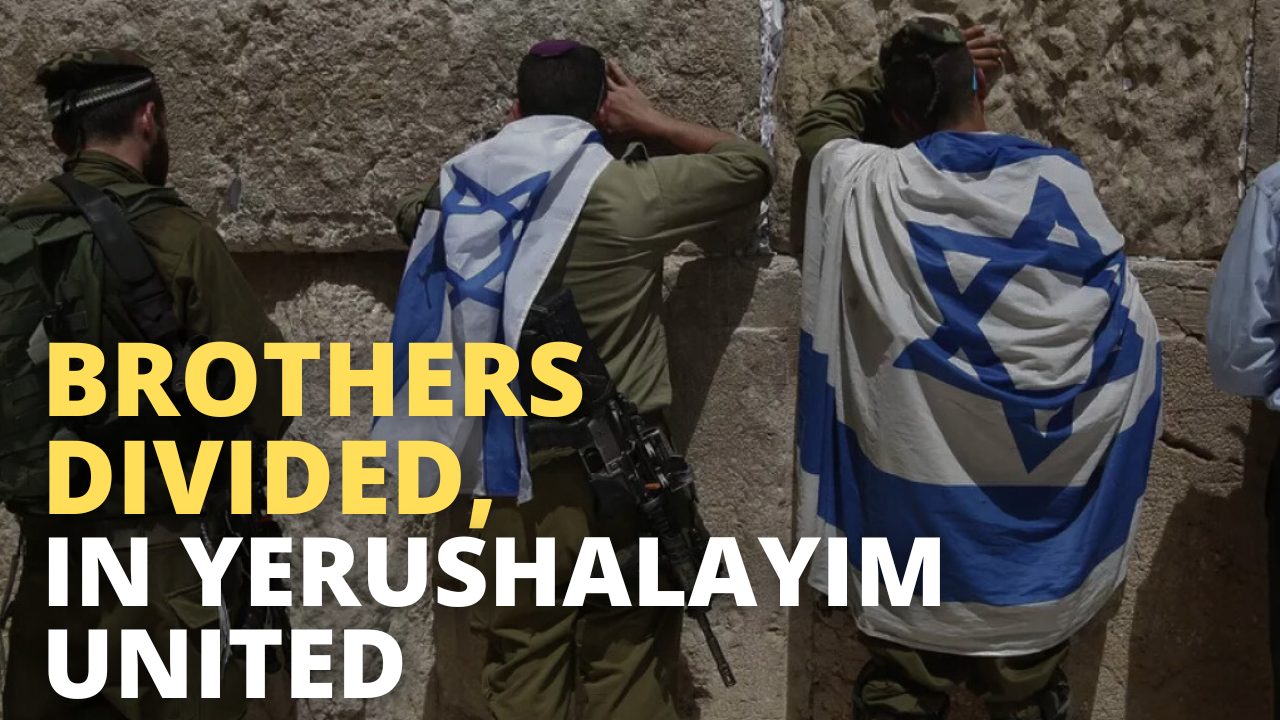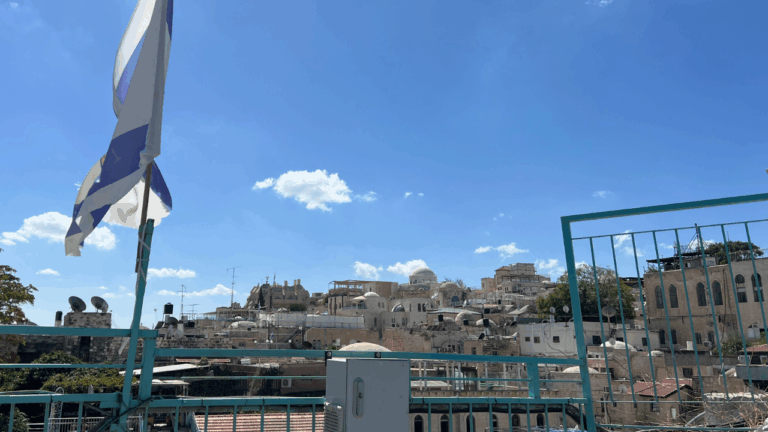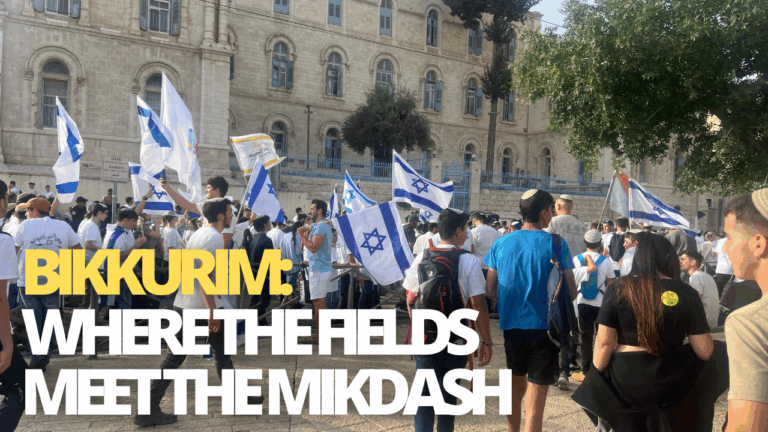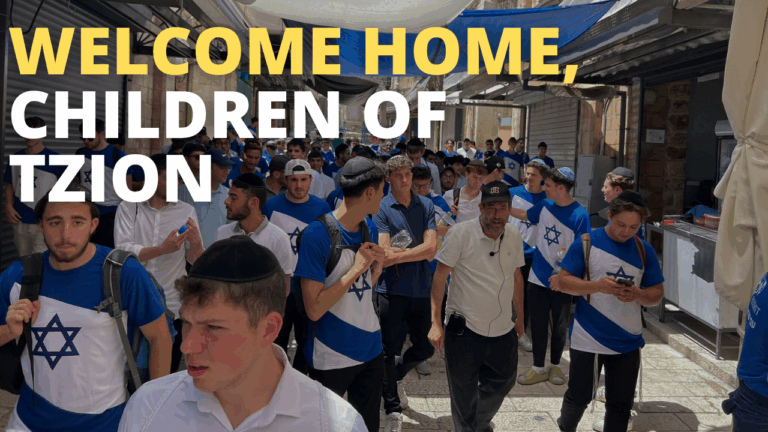Brothers Divided, in Yerushalayim United
Long before Dovid HaMelech established his permanent capital in Yerushalayim, the nations of the world already recognized the holy city as a place unlike any other. They sensed its metaphysical significance, the gateway to the heavenly realms (Ramban, Bereishit 14:18). They called the city Shalem, evoking wholesomeness and peace.
Not coincidentally, Yerushalayim straddles the border between two shevatim. As we have discussed in the past, Dovid HaMelech deliberately chose Yerushalayim as his capital specifically because it lay on the boundary of Yehudah and of “rival” Shevet Binyamin. As soon as Dovid replaced Shaul and his descendants, he knew it was essential to capture the only place capable of uniting the descendants of Leah and Rachel (see Shmuel Beis, chapter 5 with Malbim).
In the writings of the Ramchal, the Vilna Gaon, and Rav Kook, the children of Rachel are associated with mastery over the physical world. Rav Kook referred to them as the metaphoric “guf – body” of Klal Yisrael. The children of Leah are associated with the internal spiritual realm, the neshama of Klal Yisrael. Only in Yerushalayim, the city of shleimut and achdut, can the body and soul unite. And only then can Klal Yisrael fulfill its unified destiny.
The meeting of Yosef – Rachel’s primary son – and Yehudah – Leah’s primary son – after years of painful estrangement, was anything but simple. Their relationship grew darker and more dangerous before healing could begin.
Yosef appears to “pursue” and torment his brothers. Yehudah and the brothers cannot fathom that behind this harsh, un-brotherly exterior lies the immortal bonds of Kedushat Yisrael and Achdut.
In the climatic moment, Yehudah steps forward to defend Binyamin. The Midrash Rabbah (Bereishit 93:6) teaches that the word ויגש – and he drew close – could have several different meanings. On the one hand, the language could capture an aggressive, hostile attack. Yehuda was drawing close in order to destroy Yosef. The Midrash describes both brothers performing feats of enormous strength, threatening and intimidating each other into submission. On the other hand, the word also connotes appeasement and reconciliation. Yehuda drew close to this “stranger” with feelings of fury and hatred, yet at the same moment, unknowingly sets in motion the process of ultimate reconciliation with his long-lost brother.
Yosef and Yehuda do not just forget their painful pasts. Yehuda finally recognizes the greatness of Yosef, understands that his dreams were truly prophetic. The son of Leah is finally able to see beyond Yosef’s Egyptian mask and recognize the holy vessel of redemption before him.
בימים ההם בזמן הזה – the process of Kibutz Galuyot and our return to Eretz Yisrael has reunified brothers that have been apart for so many years. Yet, these brothers no longer recognize each other, vehemently disagree with each other, and threaten each other. Confusion, fear, and hopelessness cast a dark shadow over our land. The gap between the metaphysical paradigms of Rachel and Leah has never seemed so large.
And yet, is it possible that specifically in this darkest moment, Yosef’s final revelation will take place? Is it possible that the holy city of Yerushalayim, mercifully restored to Jewish hands and pulsating with the children of Rachel and Leah, will fulfill its destiny and unify the holy sons of Yaakov?
With fervent prayers for the ultimate reunion of Rachel and Leah, speedily in our days.



